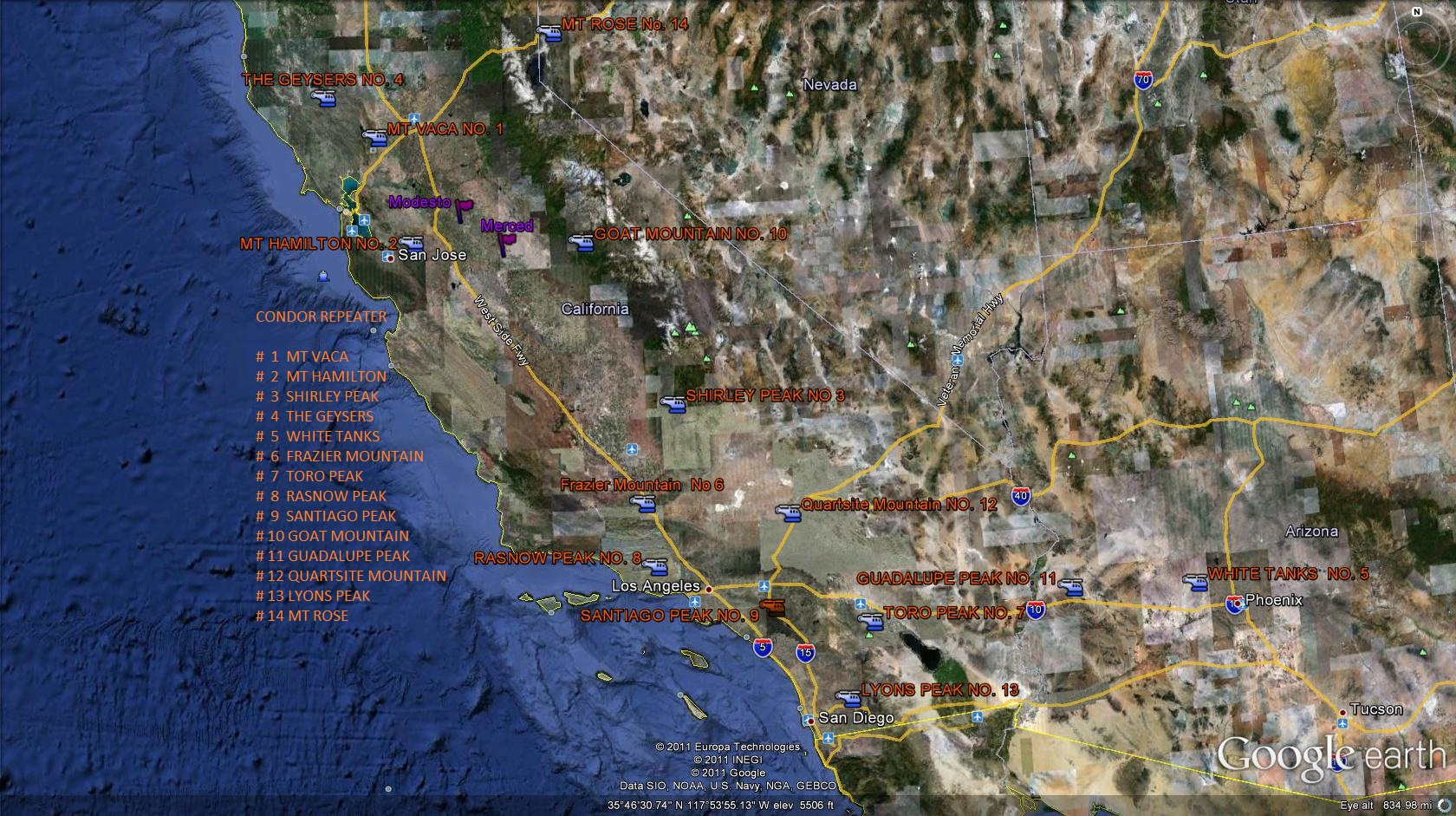
The Condor Connection is a group of privately-owned, linked repeaters with coverage in California extending from below the Mexican border on the south to beyond Phoenix AZ along I10 on the East and to Redding along I5 in the north and East to Reno, NV along Hwy 80. The system is intended for long range VHF communications, therefore, its operation differs greatly from the usual repeater operation. The following guidelines are offered to promote efficient, professional-sounding communications and foster harmony between users of the system.
Key your mic, then wait a full second before speaking. This allows the entire system to come up, ensuring that listeners won’t miss parts of what your saying.
Wait for the courtesy tone before transmitting. This allows the system to reset. If you do not hear the courtesy tone, the system is not linked.
Follow the “Repeater Operating Practices” in the current ARRL Repeater Directory.
If you hear a “jammer”, ignore him. Don’t acknowledge him in any way. If the jammer has no audience he won’t have any fun and will soon go away.
System traffic priorities:(A) Emergencies and priority information. (B) System testing by owners or control operators. (C) Public services. (D) Mobile and base station communications.
We ask you to identify at the beginning and end of your conversation. You might include your location as well.
Ask for a signal report if you are using a hand-held with a rubber duck.
Use the English language, the international language of Amateur Radio.
Simply talk as you would over the telephone. Listen to the system’s experienced users.
“Break” only if you have emergency or priority traffic. Announce your call sign if you wish to join an on-going conversation.
Since the system is primarily designed for long distance calls, local calls are best handled by local repeaters.
Be considerate and limit conversations.
System demonstrations are primarily intended for emergency or public service agencies or amateur radio classes or clubs. We suggest you ask for the assistance of an owner or control operator.
Be sure your radio is in good working order. Excessive mic gain, distortion and high background noise make it difficult to hear and understand.
And last, but not least, please have fun and enjoy the system


